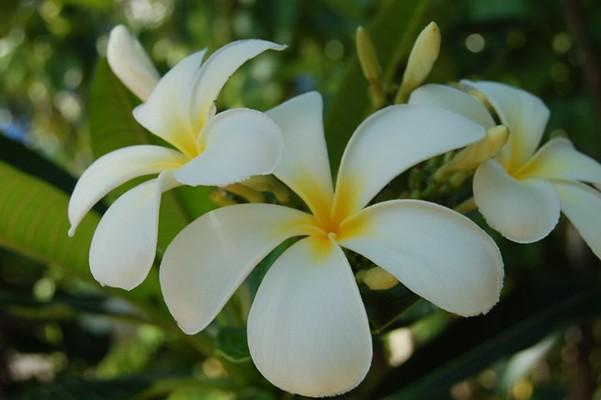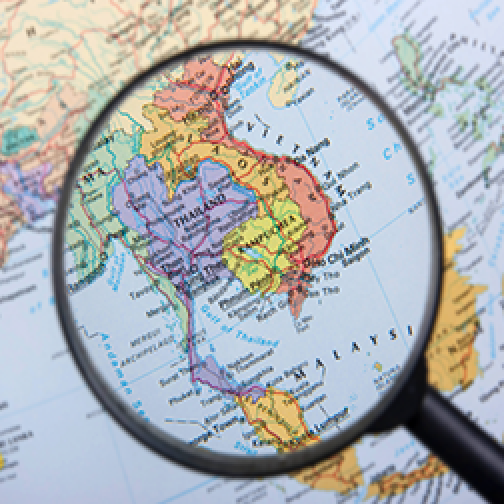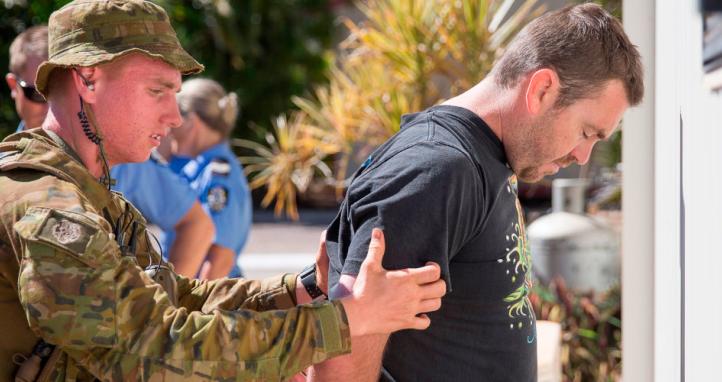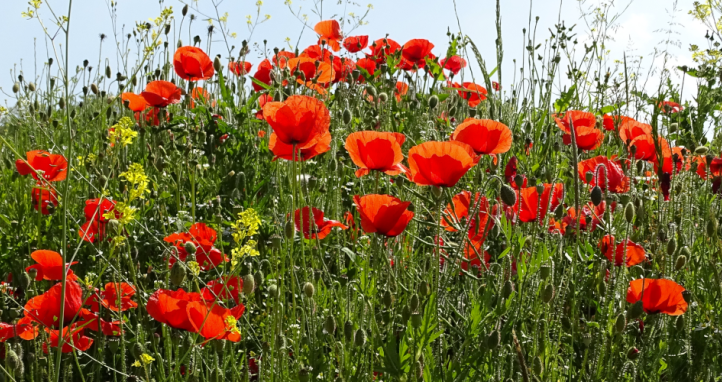Facts and figures
| Official name | French Polynesia |
| Country code | PF |
| Area | 4,167km2 |
| Coastline | 2,525km |
| Population | 280,904 |
| Capital city | Papeete |
| Timezone | UTC-10:00 |
| GDP | $USD 5.81 billions |
| Currency | XPF (CFP Franc ₣) |
| Government type | Devolved Parliamentary Dependency |
| Notable people |
|
The ‘Know Your Region’ series is designed to support unit and individual professional military education on the Indo-Pacific region. It’s important for all serving members of our military to have a foundational knowledge of the countries and issues in the Indo-Pacific.
French Polynesia is an overseas collectivity of France located in the South Pacific Ocean almost 6,000km from the east coast of Australia. It consists of 121 small islands and atolls, of which approximately 75 are inhabited (2017 census). The territory is divided into five main archipelagos spread across five million square kilometres of ocean. They include the Society Islands, the Marquesas Islands, the Tuamotu Archipelago, the Gambier Islands, and the Austral Islands.
The Society Islands are the most westerly and extensive group, accounting for two-fifths of the land area and nearly nine-tenths of the population. They consist of two groups, the Îles du Vent (Windward Islands) in the east and the Îles Sous le Vent (Leeward Islands) in the west. The total population of French Polynesia is 282,000 (2024). Most people (Approximately 178,000) live on the island of Tahiti, home to the capital city of Pape'ete and the territory’s only international airport.
French Polynesia is renowned for its stunning natural landscapes, including tranquil lagoons, expansive coral reefs, lush vegetation, waterfalls, and rugged mountain peaks. The islands are primarily made up of underwater volcanoes with the highest point being Mont Orohena on the island of Tahiti at 2,241 metres above sea level. The climate is tropical, with a warm, humid season from November to April and a cooler, drier season from May to October. Freshwater is sourced mainly from mountain streams and rainfall, which is collected in reservoirs and used sparingly by the local population.
Flora and Fauna
French Polynesia is rich in biodiversity. Coconut palms thrive in the coastal regions and are used in various ways, from food and drink (coconut milk and water) to materials for construction and crafts. The islands are also covered in sandalwood and breadfruit trees, as well as the Polynesian chestnut, Tahitian hibiscus, and vanilla orchid which produces the famous Tahitian vanilla extract. The native Tiare flower is the national flower and is a symbol of Tahitian identity. It is used widely as decoration and for cultural purposes.

Due to the remoteness of the islands, there are no native mammals; however, there are some unique bird species, including the Tahiti monarch and the Marquesan kingfisher. These species are critically endangered due to the introduction of rats and other invasive birds.
A short history
Polynesians first settled on some of French Polynesia’s islands around 200 BCE. They travelled by outrigger or double-hulled canoes using celestial navigation and ocean currents. By the 9th century, the islands had developed into hubs of Polynesian cultural exchange, particularly Tahiti, which played a central role in the region.
Europeans first made contact with the islands in 1521 when Portuguese explorer Ferdinand Magellan sighted Puka-Puka in the Tuamotu Archipelago. In the centuries that followed, Spanish and Dutch navigators discovered several other islands; however, they did not establish a presence. In 1767, Capt. Samuel Wallis discovered Tahiti and named it King George III Island. It was subsequently visited by French Captain, Louis-Antoine de Bougainville in 1768 and Captain James Cook in 1769. Cook’s expedition was specifically to observe the transit of Venus for navigational purposes. While he was there, he and botanist Joseph Banks collected valuable information on fauna and flora, as well as on native society, language and customs – including the proper name of the island. He visited again in 1773 during his second voyage to the Pacific, and once more in 1777 during his third and last voyage before being killed in Hawaii. His exploits brought Tahiti into European awareness, leading to increased interest in the region by explorers and traders.
The arrival of whalers and other merchants coming from the penal colonies in Australia in the late 1790s marked the first major overturning of traditional Tahitian society. The crews introduced alcohol, weapons, and infectious foreign diseases, and encouraged prostitution, which brought with it venereal disease. These commercial interactions with westerners had catastrophic consequences for the Tahitian population, which shrank rapidly over the next several decades.
In 1797, members of the Protestant London Missionary Society settled on Tahiti with the aim of converting the native population to Christianity. They helped the local Pomare family gain complete control of the island, which had until then been shared between several clans. Their arrival marked a turning point for Tahiti, having a lasting impact on the local culture. French Catholic missionaries arrived in 1834 but were expelled two years later. This prompted France to send an admiral to collect reparations. In 1842, with tensions rising between Britain and France, Admiral Du Petit-Thouars convinced Queen Pomare IV to make Tahiti and its dependent islands a French protectorate. One year later, following a disagreement with the Queen, France expanded their control over the population. This led to the French Tahitian war (1844-1847) which ultimately saw the Queen exiled and the French military emerge victorious against the local warriors. Upon the queen’s return she was forced to sign a treaty that officially diminished her authority.
By 1880, Tahiti and its dependent islands were formally annexed by France. This remained until 1957, when the status was elevated from a colony to an ‘overseas territory'. Nearly half a century later in 2003, the classification was again changed from an overseas territory to a collectivity of France. In February 2004, a Statute of Autonomy was signed which gave the local government far greater powers to administer the territory; however, France still retains control of defence and foreign relations.
People and Society
The population of French Polynesia is a mix of Polynesian (about 78%), European, and Asian heritage, creating a unique blend of cultures. Approximately 55% of the population lives in urban areas, primarily in and around the capital Pape’ete. The remaining population live in rural or remote island communities where old ways of life remain prevalent. Urban areas are characterized by a modern lifestyle with easy access to amenities such as education, healthcare, and commerce, while rural regions maintain a slower pace, relying on subsistence farming, fishing, and community-based living.
Like all islands with Polynesian heritage, French Polynesians value communal living and close family ties. Extended families often live together or near one another, sharing resources and responsibilities. This traditional lifestyle is especially prominent in the outer islands, where the arii (chiefs) continue to hold cultural significance. Fishing, weaving, and traditional dance remain integral to daily life and celebrations.
In contrast, modern influences have brought changes, particularly in urban areas. The French education system is well-established, and younger generations often pursue careers in the tourism industry, public administration, and trade. French Polynesians enjoy a high degree of connectivity with the rest of the world, facilitated by robust digital infrastructure and ties to mainland France.
France has provided considerable financial support to the territory which enjoys a developed healthcare system, high education standards, and a resilient economy. Despite this modern European influence, there is still a strong sense of Polynesian identity, with efforts to preserve and promote indigenous languages, arts, and traditions. Relations with other Pacific Island nations have also helped to strengthen common ties and address regional challenges.
Customs and Traditions
Cultural preservation is a central part of French Polynesian life. Traditional ceremonies, such as weddings and rites of passage, are celebrated with elaborate feasts, music, and dance. Handcrafted costumes and ornaments are commonly used, showcasing intricate designs made from local materials like shells, pandanus leaves, and feathers.
Dance plays a vital role in French Polynesian culture, with the ‘Ori’ being one of the most iconic forms. Dancers use expressive movements to convey stories and legends, often accompanied by rhythmic drumming and chanting. The Heiva festival, held annually in July, is the region’s premier cultural event, featuring traditional sports, singing, and dancing competitions.
Weaving and carving are the most prominent crafts in French Polynesia. Women create items such as mats, baskets, and hats from pandanus leaves and coconut fibres, while men specialize in wood and stone carvings, producing sculptures, tiki statues, and canoes.
Tattooing (Tatau)
Tattooing in French Polynesia is deeply symbolic, representing identity, heritage, and life achievements. Traditional tattoos feature intricate patterns inspired by nature, spirituality, and social rank. Ancient techniques involved tools made from bone or shell, with ink derived from natural substances like candlenut soot. Modern tattooing continues to honour these traditions while embracing contemporary styles.
Tifaifai
Quilting has also become a cherished art form. The word Tifaifai (pronounced ti-fay-fay) literally means to mend, patch, or sew. The quilts consist of handmade applique designs that often reflect nature. They can be used as bedspreads, wall art, or pillowcases and are considered treasured gifts and heirlooms. Weaving was introduced in the 18th century when the wives of Protestant missionaries taught patchwork techniques to the Polynesian women. Before that, Tapa (bark cloth) was the only cloth available. Today, tifaifai is handcrafted by matriarchs affectionately referred to as Tahitian mamas. These women are proud guardians of their heritage; and many have since developed their own trademarks and signature patterns.
Media and Connectivity
French Polynesia ranks among the Pacific’s top regions for media freedom. It has a mix of state-run and private media outlets, including television, radio, and online news platforms. Approximately 70% of the population has access to the internet, a figure that is steadily growing due to ongoing investments in digital infrastructure.
The French Polynesian government is implementing a strategy to expand digital access and boost the local economy through technology. This initiative includes improving connectivity in remote islands, promoting e-governance, and fostering innovation in education and healthcare.
For more general information on French Polynesia, explore the resources below:
Video:
- Top 10 Breathtaking Places You Should Visit In French Polynesia | WanderlustTTW
- Polynesian Culture | South Pacific & French Polynesia | Lindblad Expeditions-National Geographic
- FRESH 9 – Heiva: the ancient dance & sports of Tahiti
- The art of traditional Tatau in Tahiti | The Pacific | ABC News
Articles:
Know your region
Know Your Region series gives you a shortcut to understanding other nations in the Indo-Pacific region.









